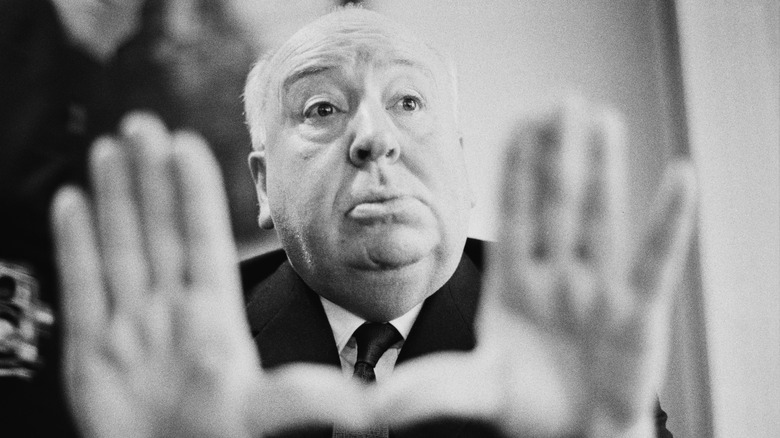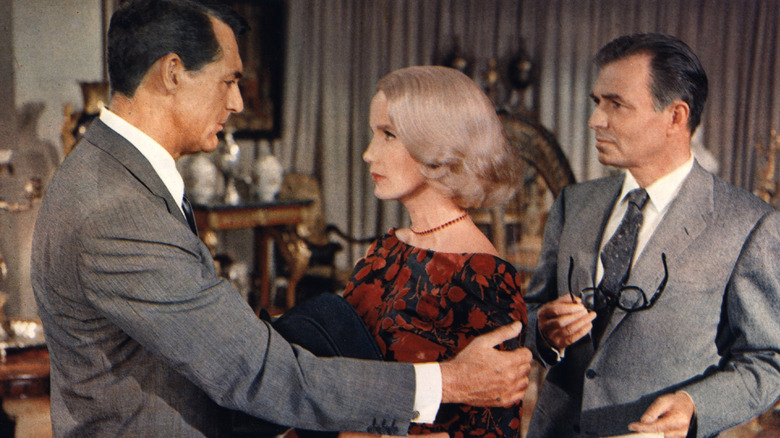Alfred Hitchcock Found A Creative Solution To North By Northwest's Villain 'Problem'
Alfred Hitchcock is known for his suspense-laden thrillers and innovative plot devices that modern filmmakers take cues from to this day. "North by Northwest," the 1959 mystery featuring Cary Grant, is a lesson in how to intertwine various antagonistic forces without compromising the competitive strength of one or the other.
Grant stars in the film as Roger Thornhill, a man who is mistaken for a government agent by a ruthless spy, Philip Vandamm, played by "Lolita" star James Mason. Hitchcock often liked to cast attractive actors with a reputation as romantic leading men in villainous roles, such as Anthony Perkins in "Psycho" and Robert Walker in "Strangers On A Train." This untraditional approach to casting helped stars like Jimmy Stewart find their signature style.
Villains like Norman Bates in "Psycho" evoke fear through their unsettling demeanor, but only a few Hitchcock villains are both easy on the eyes and charismatic to boot. A character whose social graces conceal a diabolical hidden nature makes for a compelling opponent, but sacrifices the spine-chilling presence of some of Hitchcock's other villains. Hitchcock manages to solve this problem in "North by Northwest" without forfeiting any of his favorite elements of horror and suspense. In his words, "the introduction of the villain is always something of a problem," but no cinematic problem is impossible for Hitchcock.
One antagonist wasn't enough
Hitchcock sat down for extensive interviews with French filmmaker and critic François Truffaut, which Truffaut compiled and published in a book titled "Hitchcock." Truffaut and other French New Wave directors like Jean-Luc Godard viewed Hitchcock as the pinnacle of auteurs, filmmakers with immense creative control and distinctive style. They considered this feat particularly impressive due to the rigid nature of the Hollywood studio system through which Hitchcock produced the majority of his work.
Hitchcock tells Truffaut that in "North by Northwest" he wanted James Mason to be a viable opponent against Cary Grant in competition for the romantic interest played by Eva Marie Saint. In order to achieve this, Mason's character had to be just as "suave" as Grant's, if not more so. To maintain an evil character with a threatening demeanor, he split the antagonist into three: the "smooth and distinguished" James Mason, "his sinister-looking secretary; and the third spy, who is cruel and brutal."
This way, the audience is genuinely concerned that Saint's character might fall for Mason's, but also feels that Grant's character is under genuine threat to his safety. In this three-pronged approach, Hitchcock manages to evoke the fear of an eerie looming presence, romantic competition, and physical threat all at once. This breathes suspense into the melodrama in which, according to Hitchcock, the villain problem is even more prescient "because, even by definition, melodrama is passe and it has to be brought up to date."

